|
Publisert:
25.09.2024 | Oppdatert: 28.06.2025
Plant stress theory
Dr. Oleksii Orlov
PhD in Agriculture
The most common stresses in plants are lack of moisture and frost
damage. In this article, we will consider what are plant stresses and how do
they affect the yield?
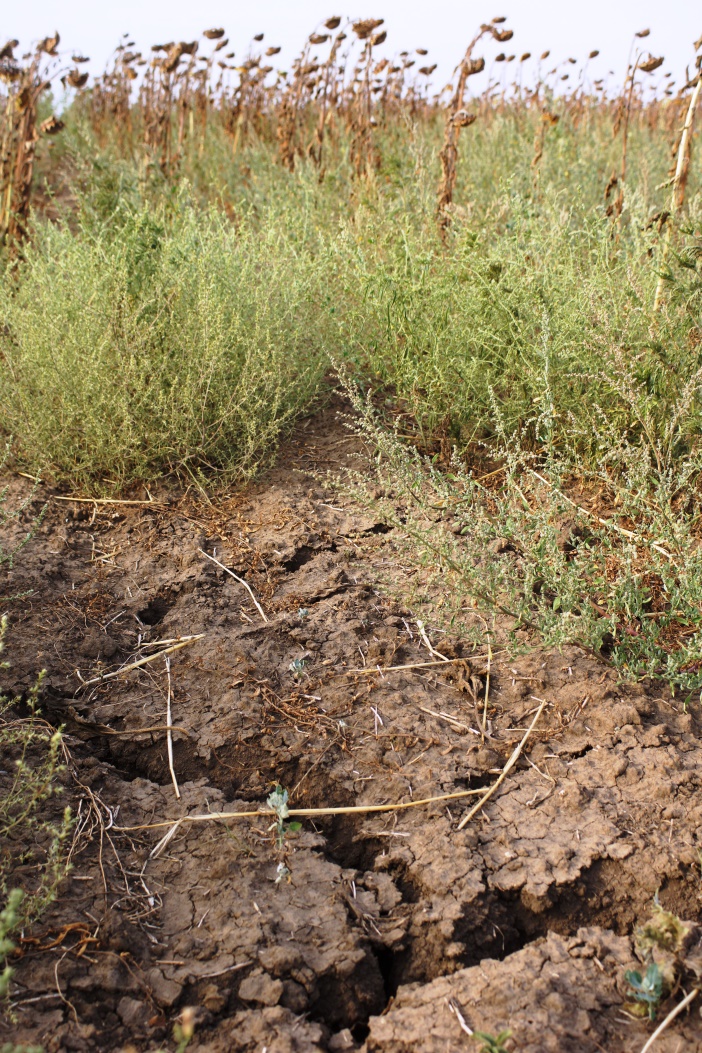
Photo
©
Dr. Oleksii Orlov
The photo show the death of a field with sunflowers due to
lack of moisture due to late sowing. Neighboring farmers who sowed
sunflowers when it was wet got a good yield
Plants are subject to numerous stresses, which
sometimes seriously affect their productivity. For example, a decrease in
crop yield is caused by stress.
Plant death is also caused by stress.
Such negative effects include both low and high temperatures, both lack of
moisture and drought, as well as the influence of phytopathogens,
ultraviolet radiation, etc. Even the use of pesticides and other
preparations is not without stress for the organisms of cultivated plants.
Science is working intensively on the issue of reducing the impact of
various negative factors on plants, to help them prepare for extreme
situations even before they encounter them.
Plant stresses
are divided into three types:
- abiotic
- biotic
- agrotechnical
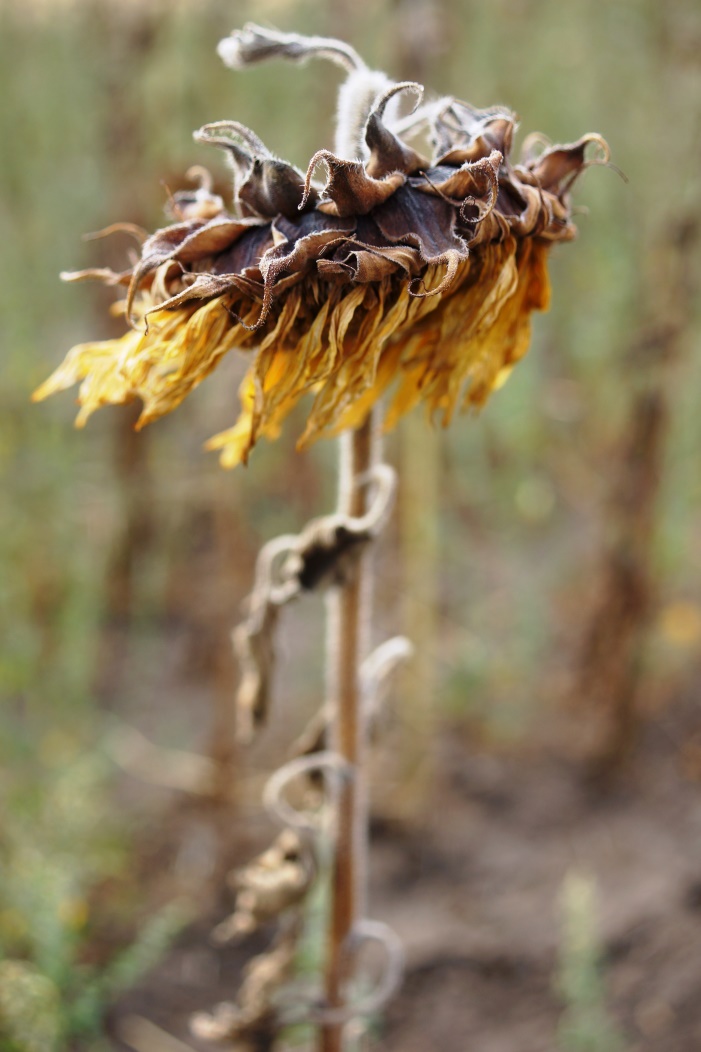
Photo
©
Dr. Oleksii Orlov
The death of plants is
also caused by strong stresses. The photo shows abiotic stress, death due to
lack of water
Abiotic or
natural stresses of plants
Abiotic
stress is stress caused by environmental factors such as extreme
temperatures, wind, drought and soil salinity.
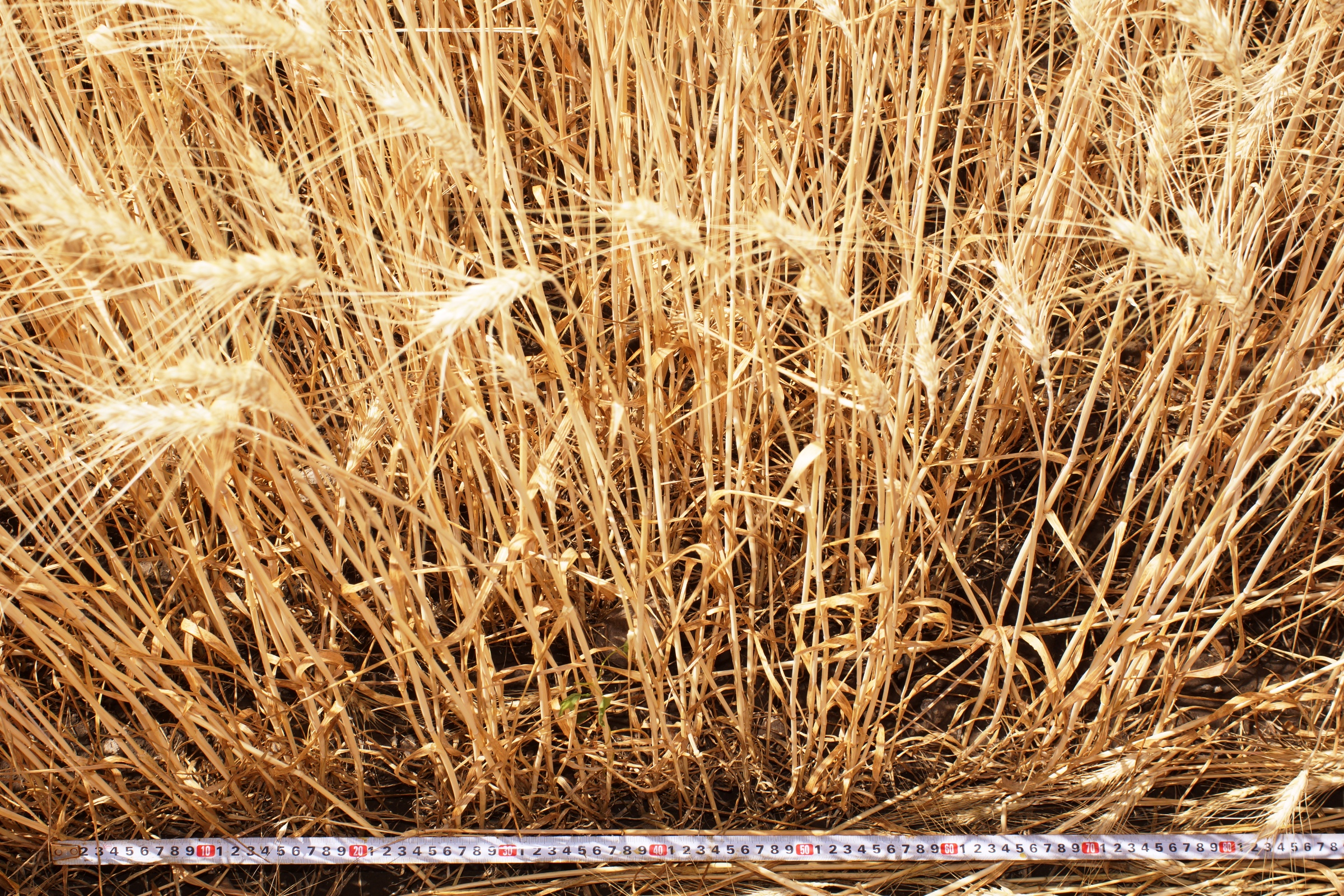
An example of abiotic or
natural stress is: wheat under the influence of severe drought. This
is the most common abiotic stress in drought areas. In this field,
the wheat yield will not be more than 2-2.5 t/ha. If the annual
yield is limited by a lack of moisture, all resources (fertilizers,
pesticides) should be using under the planned yield, in such a way
that there is a profit. So that the profit from the harvest of 2.5
t/ha covered all the costs of production!
In open field conditions,
it is very difficult to control abiotic stresses. In the conditions of
greenhouses /
indoor farming, abiotic stress factors are easy to control.
It is
very important to understand how stress affect plants and other living
organisms so that we can take some preventive actions.
Preventive
actions are the only way to protect yourself and your fields from abiotic
stress.
There are several methods that people can use to reduce the
negative impact of stress.
There are many different types of abiotic
stress, the most common of which are:
- Cold
- Heat
- The wind
-
Drought
- Hail
- Soil salinization
- Soil acidity
- Soil
alkalinity, etc.
Biotic stresses of plants
Biotic stress is stress that occurs as a result
of damage from the side of other living organisms, such as bacteria,
viruses, fungi, parasites, insects, weeds, etc.
Here are some examples of common biotic
stresses...

Damage caused by weeds (Xánthium
strumárium weeds), as in this chickpea field, is biotic stress!
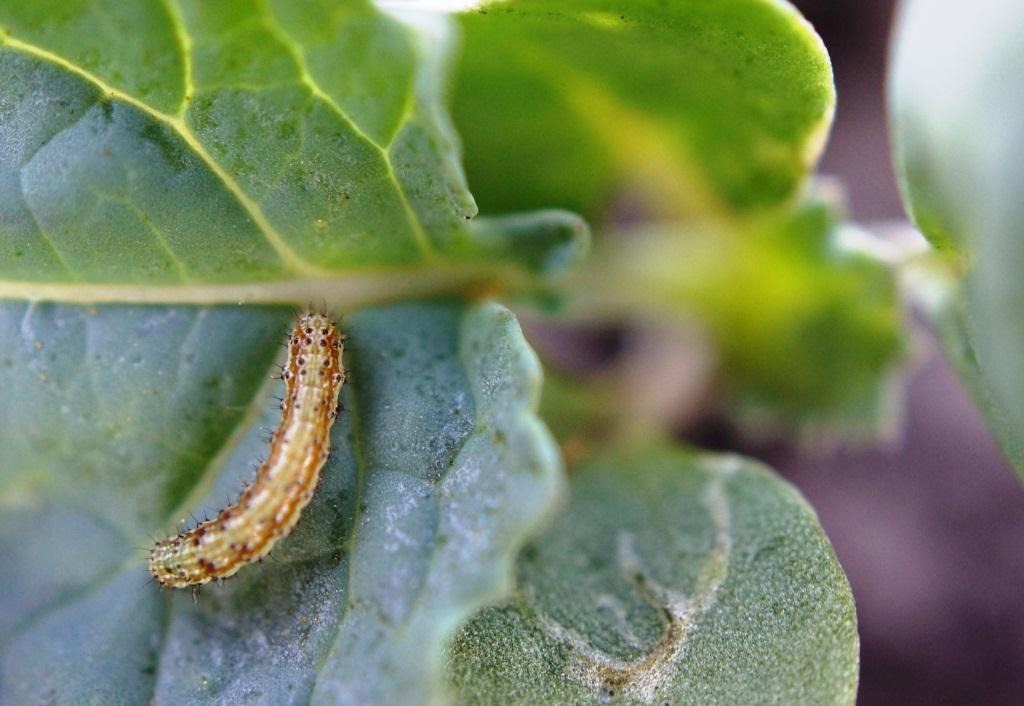
Photo
©
Dr. Oleksii Orlov
Pest damage (Pyralis
larvae) as on this canola plant is biotic stress!
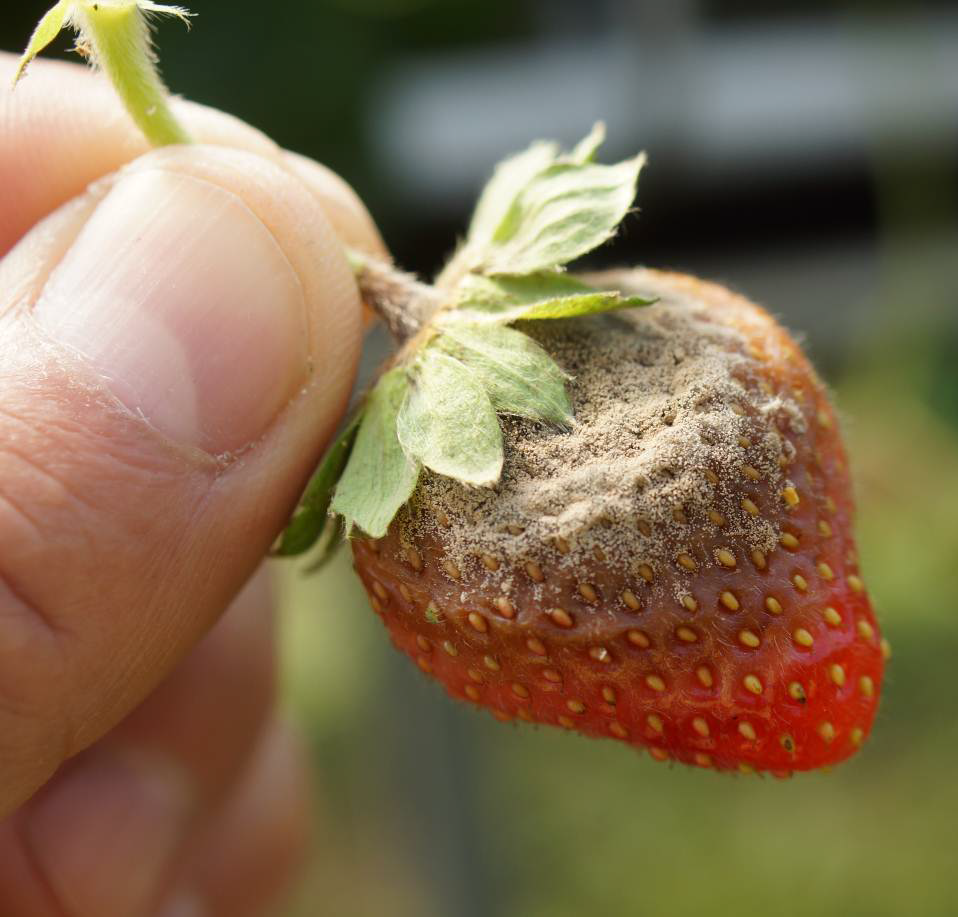
Photo
©
Dr. Oleksii Orlov
Damage caused by
diseases (botrytis of strawberry) is biotic stress!
The types of biotic stresses that affect an
organism depends by the climate, and even by the ability of the species to
resist certain stresses.
Damage and harm caused by different living
(biotic) and non-living (abiotic) factors can appear very similar.
Even with careful monitoring, an accurate
diagnosis can be difficult.
For example, leaf wilting of strawberries
caused by drought stress may be similar to leaf wilting caused by a severe
vascular disease caused by a fungus or wilting caused by pests.
Agrotechnical stresses of plants
Many methods of agricultural technology cause
stress in plants. For example, applying herbicide or overestimating its
rate, or harrowing of fielda with germinated plants.
Some
agricultural methods contribute to strengthening the effect of biotic and
abiotic stresses of plants.
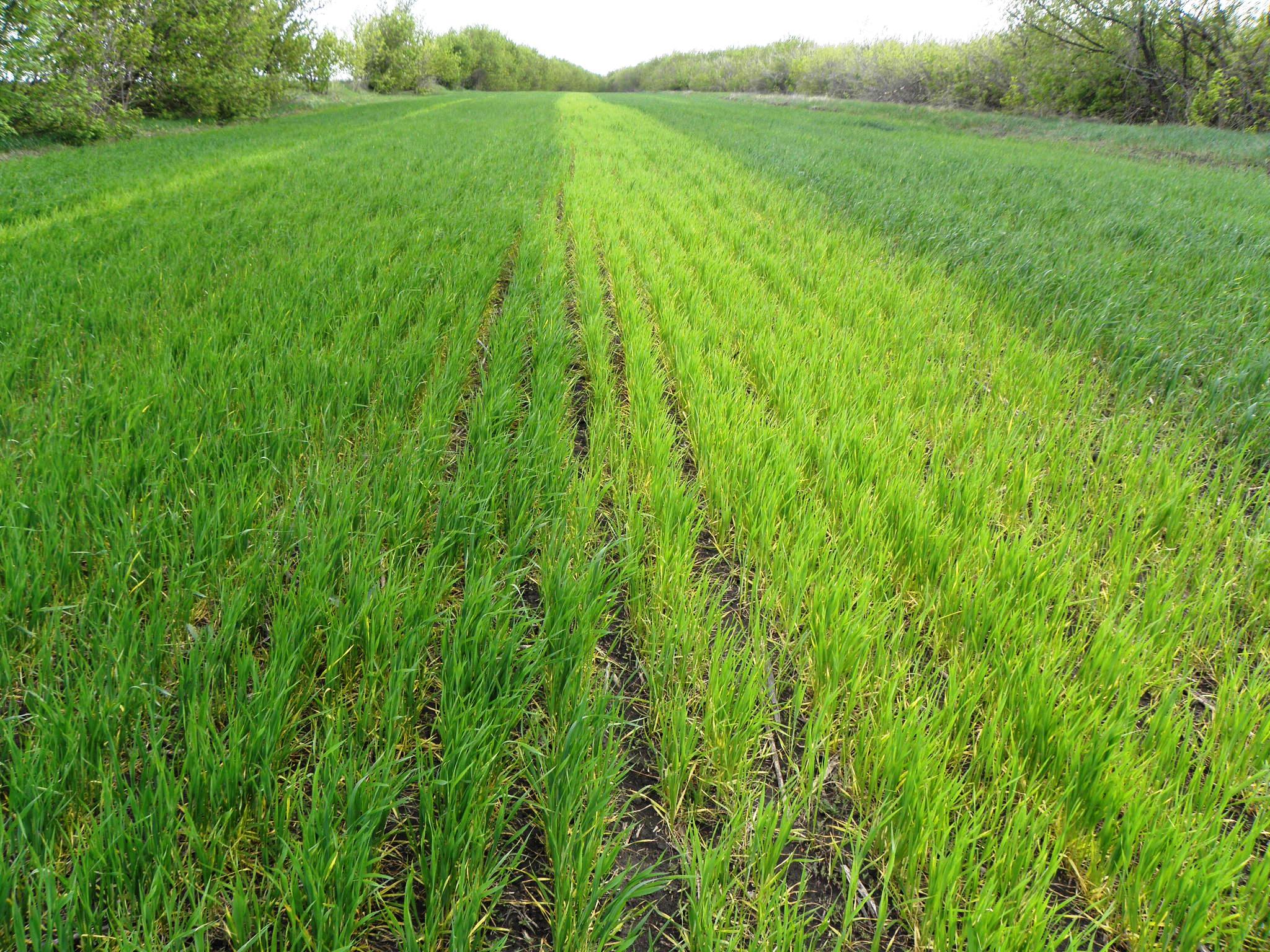
An
example of agrotechnical stress – due to an error during fertilizer
application (one pass of the fertilizer spreader was missed), the
wheat was
yellow
Combined action of plant stress factors
Factors act together.
It is very important to determine the most influential.
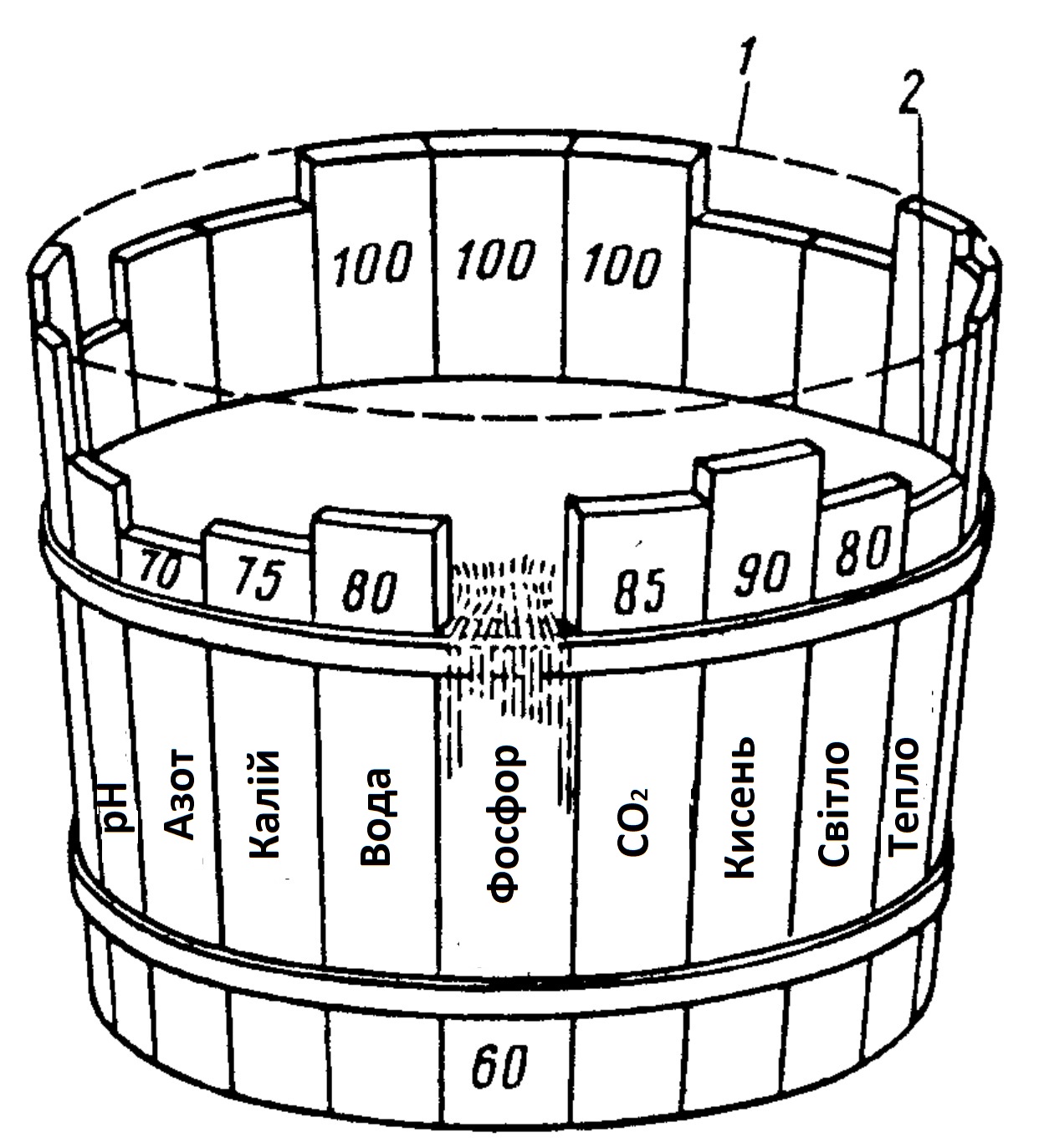
БLiebig's
barrel, or the basic law of agriculture:
1 - The maximum possible yield
2 – Actual yield
which is limited by the action of the stress factor, lack of
phosphorus!
Here we see that the factor that causes the greatest damage is a
lack of phosphorus.
Here are some simple examples of the joint action of stress factors...
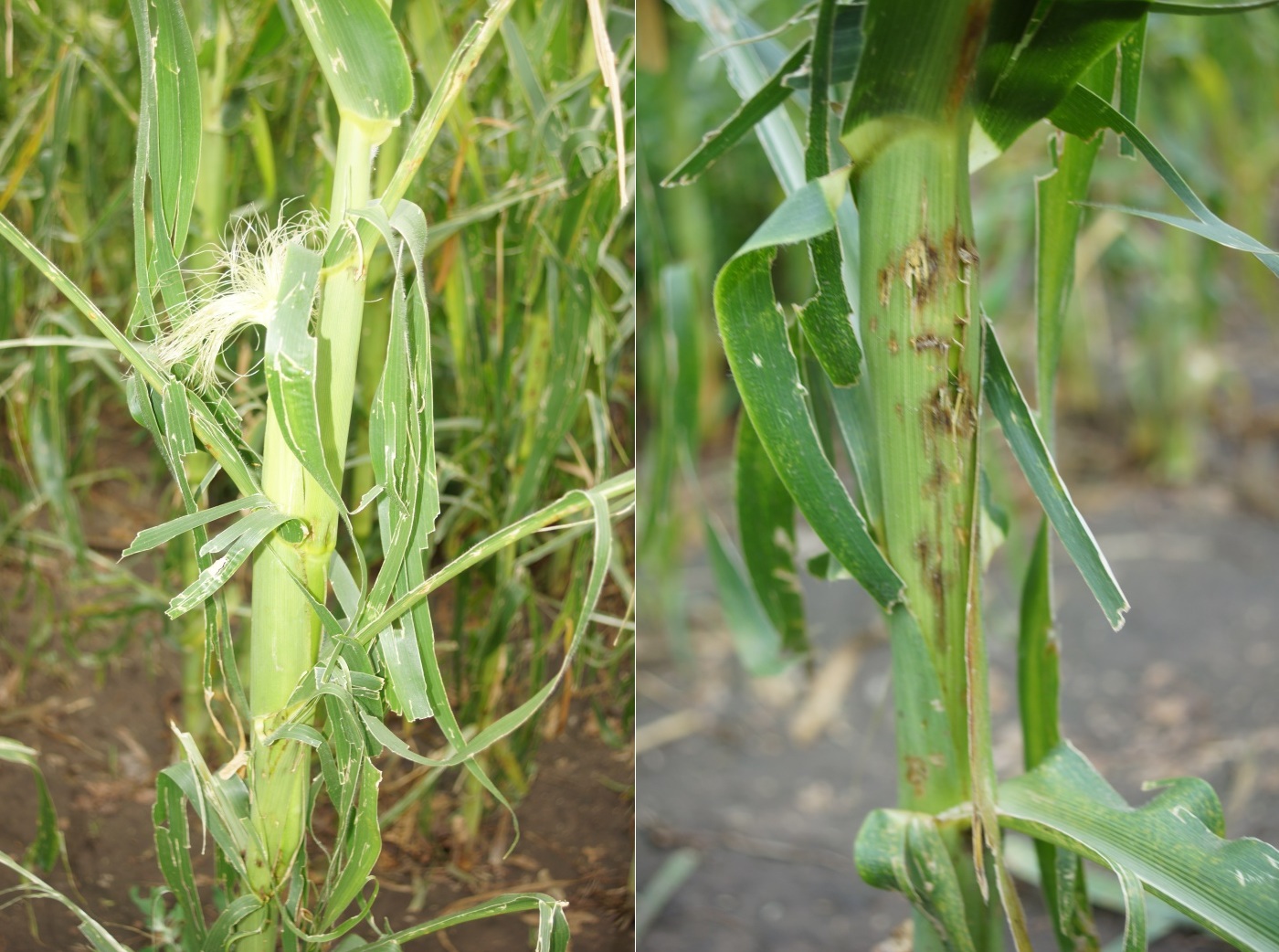
An
example of the joint action of abiotic and biotic stress factors –
corn was hit by hail (abiotic factor). And immediately a fungal
infect
in the
damaged places
and the plants got sick (biotic factor). In this case, if
immediately after the hail you can spray with
fungicide,
then you can prevent the spread of the disease!
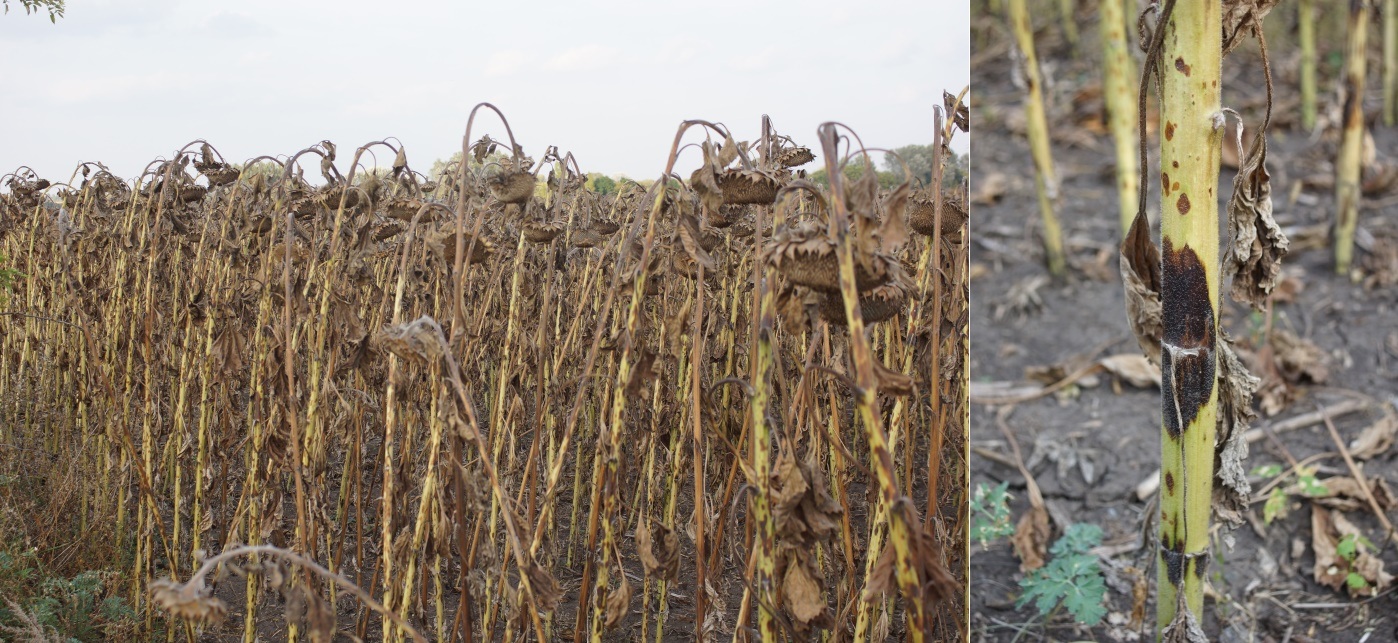
An
example of a combination of two biotic stress factors - the
sunflowers field is
infected with two diseases: Phomopsis - in the photo right (1st
stress factor) and Alternarosis (another stress factor)
Plants are always affected by many factors at the same time!
Three phases of
a plant's response to stress
The term "stress" (from the English stress -
pressure or tension) was introduced into the
scientific lexicon in 1936 to describe the body's reaction to any strong
adverse influence..
According to the theory of stress, the
corresponding reactions to stressful effects includes three phases (Hans
Selye stress triad):
1 - alarm rection
2 - adaptations (resistance)
3 - exhaustion.
In the third phase of the reaction to stress
(exhaustion) - the protective capabilities of the plant are exhausted,
cellular structures are destroyed, cells die. As a rule, this is an
irreversible phase of stress that leads to the death of the plant.

The third phase of the reaction to
stress (exhaustion) is the withering of plants and the death of the
crop. In such a phase, the changes are already irreversible,
watering or applying fertilizers will not change the situation
Measurement of plant
stress
Plant stress measurement
is a quantitative assessment of the impact of the stress factors to the
plant health.
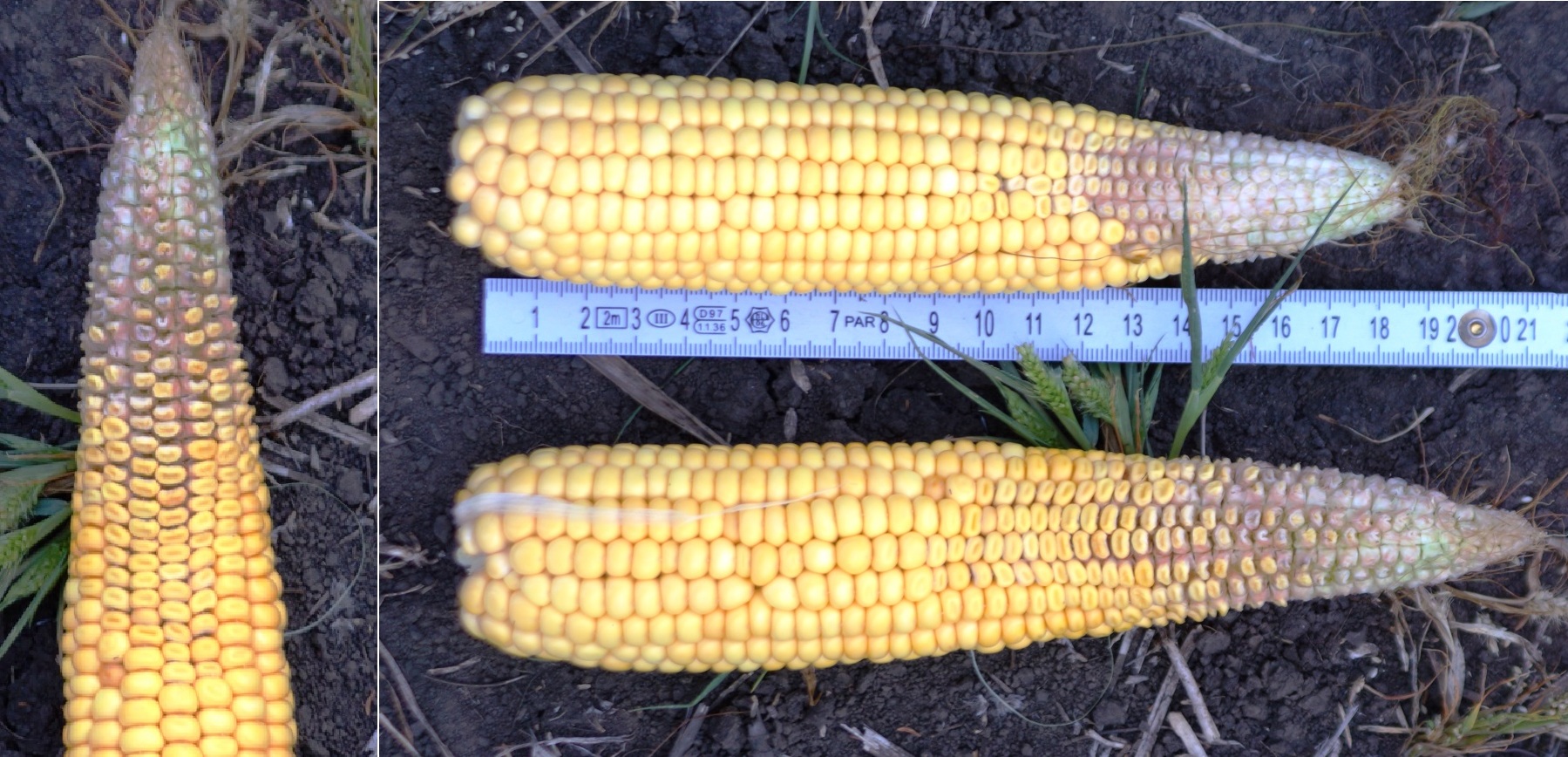
An
example of measuring plant stress is how drought affected the corn
yield
In some cases, it is easy to measure the plant's stress level, and
in some it is difficult or impossible to do.

An
example of severe plant stress is the yellowing of sunflowers due to
the effect of IMI herbicides. In this case, the yield decreased
significantly, and some fields died. Sunflower greatly reduces the
yield under the influence of stress in the 3-4 leaf phase, when the
future yield
is laid! This is an example of a medium level of stress
When plants are under
less than ideal growing conditions, they are considered stressed.
Stressors can affect growth, survival and yield.
Therefore, it is
important to assess whether something can be done right now to improve the
condition of the plants, or whether nothing can be done and attention should
be paid to the prevention of stress factors already next season.
Let's give some examples: a case when something can be done and a case when
something can no longer be done.
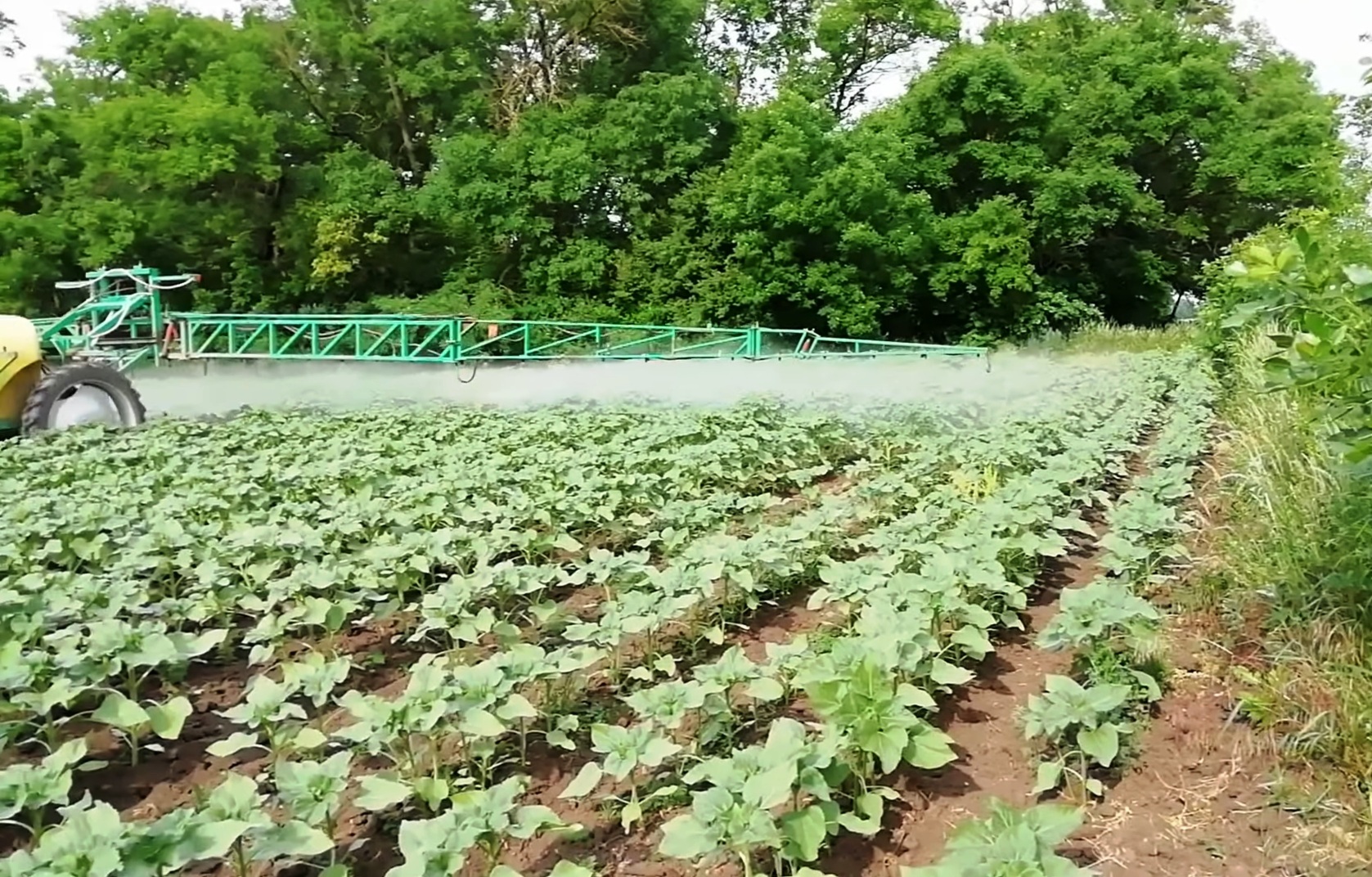
A case where something can be done.
We saw that the sunflower lacks nitrogen.
And if there is not enough nitrogen, then the plants feel stressed
from the lack of nitrogen nutrition, then you can make foliar
fertilization with urea.
In the photo - spraying of sunflower with urea

The case when you can't do anything is the death of the crop from strong
frost and snow in Uzbekistan. The trees will not die, but they will
not produce a fruits this season.
Plant stress studies examine the response of plants to limitations and
excesses of basic abiotic factors (light, temperature, water, and nutrients)
as well as other stressors that are important in certain situations (e.g.,
pests, pathogens, or chemicals).
Measurement of plant stress usually
focuses on measurement of living plants. It may include visual assessment of
plant viability, but more recently the emphasis has shifted to the use of
tools and protocols that detect the response of certain processes within the
plant (especially photosynthesis, plant cell signaling, and plant secondary
metabolism).
Determining the optimal conditions for plant growth, for
example, optimizing the use of water in the irrigation system, in
irrigation.
Determination of the climatic range for different species
or subspecies of cultivated plants, their varieties and hybrids.
Determining which varieties and hybrids of cultivated plants are resistant
to this or that stress factor.
Plant stress
management
Prevention of plant stress:
- GMO plants, more
resistant or tolerant tor stresses
- control of stress-causing factors
- reducing the effects of stress factors
- agricultural technology aimed
at reducing stress and preventing it.
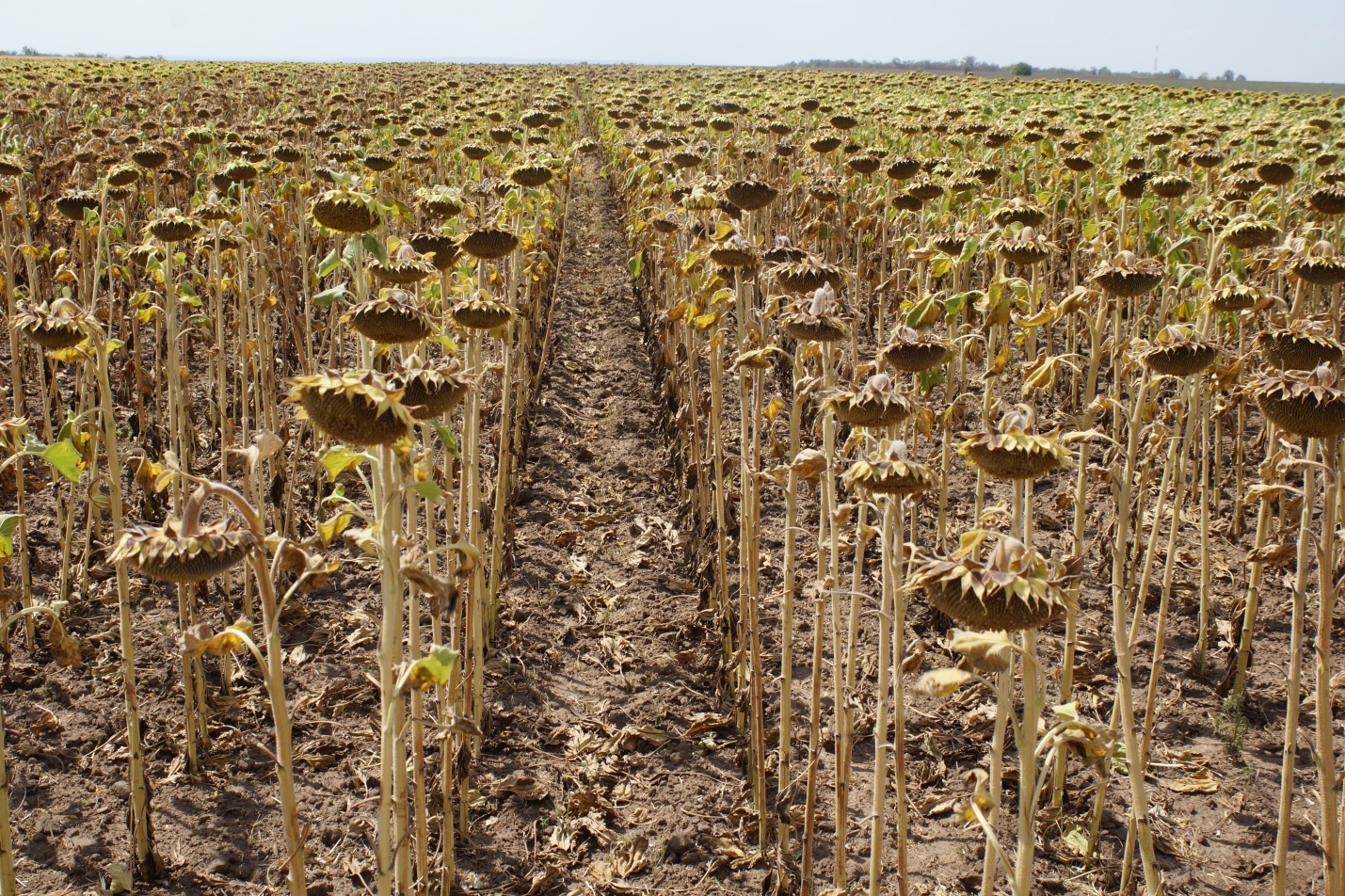
It is
very important to correctly assess the impact of stressful factors
and build a business in such a way as to make a profit. As in this
photo, sunflowers are grown under conditions of drought stress.
Although the yield is not high, 1.5-1.8 t/ha, but thanks to the
correct agricultural technology, planning of costs for the minimum
yield
and the correct selection of
varieties, the farmer
received a good profit!
The highest yield is possible only if the plants
are grown during all the growing season without stress!

Photo
©
Dr.
Oleksii Orlov
If you grow plants
without stress, grow plants in optimal conditions, you can get large
yields and high profits. As in this field, where wheat yielded 11
t/ha!And it is no hybrid wheat!

Photo
©
Dr. Oleksii Orlov
Contact us for consulting
and creation of profitable projects!
We guarantee the best
quality of services!
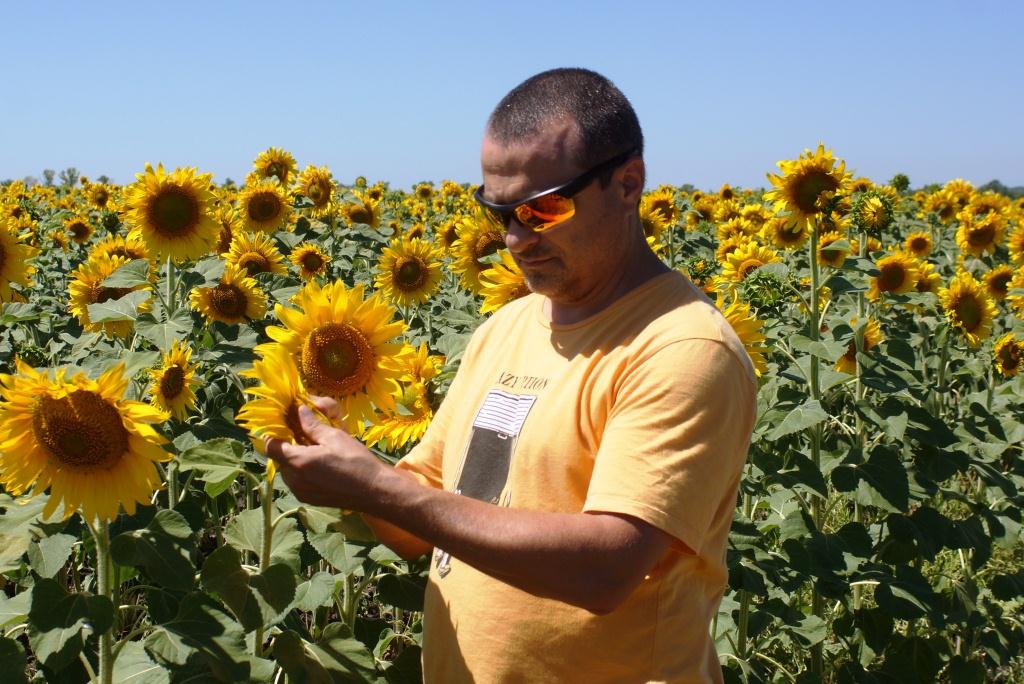
Photo
©
Dr. Oleksii Orlov
Disclaimer
© Agricultural Consulting
Service.
Agricultural consulting. Technical audit. Up-to-date
business creation turnkey. Business Consulting Consulting
Services for agriculture, aquaculture, natural resources, environment, safe
energy in industry and home construction...
|
|











